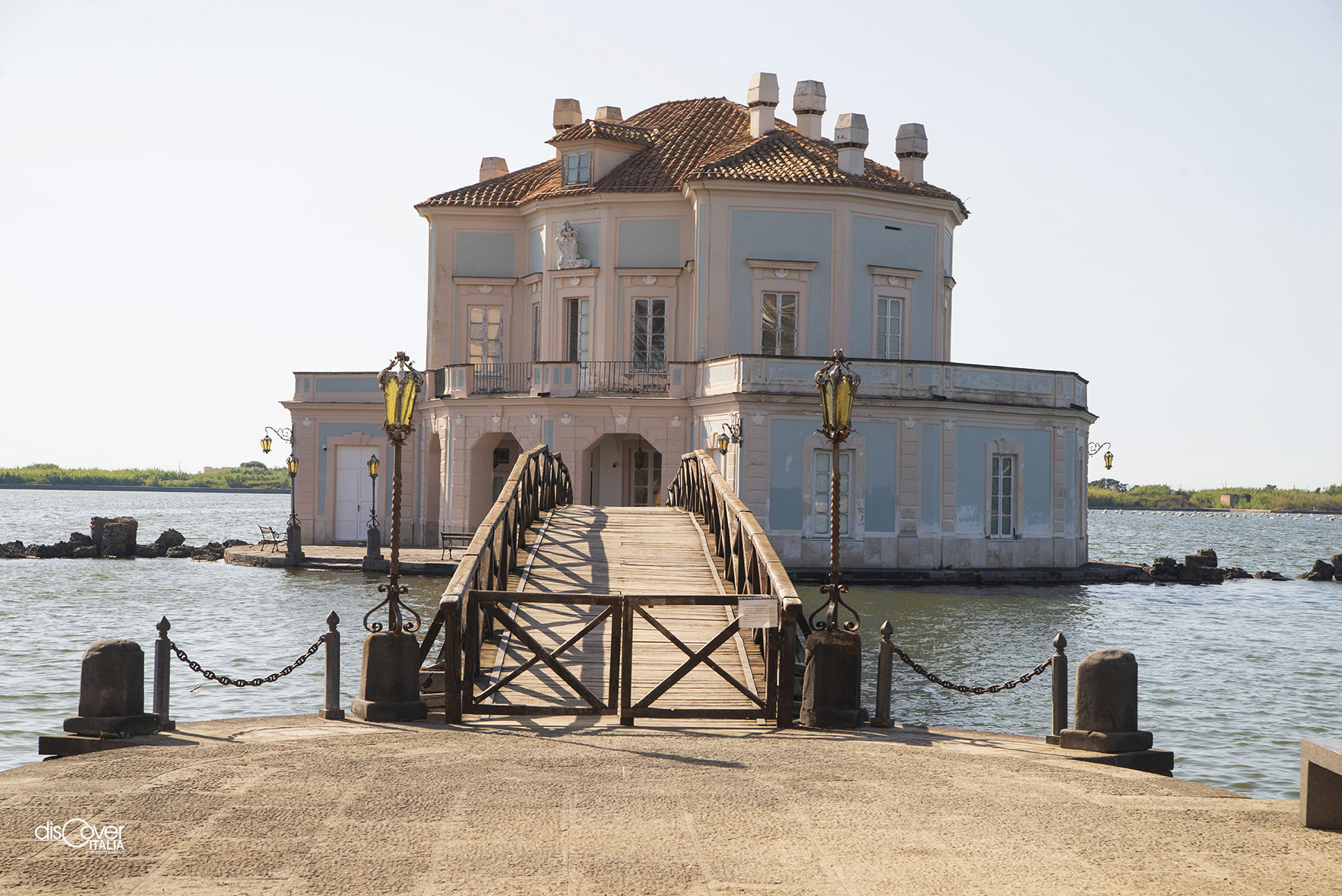Oysters from farms on the other side of the lake and delicious fish caught in the sea, beyond the sandy dune.
It was a richly laid table that welcomed guests in the circular hall, flooded with light from the large windows overlooking the water. It was a spring day, 15th of May 1819, when King Ferdinand shared the table with Emperor Franz II of Habsburg Lorraine and his royal wife. They were the first guests who spent a stay in the Royal “Casina” (small house) on the Fusaro after the vicissitudes of the kingdom between the Neapolitan Republic of 1799 and the French decade. Other lavish dinners and sumptuous receptions would follow in that room, which still welcomed those guests and others no less illustrious of the Bourbon kingdom: the prince of Metternich, the princes of Saxony, the archduchess Carolina and then the tsar and the tsarina in 1848 and the king of Prussia in 1859.

The Casina Reale on the lake had all the characteristics to be a representative residence, reserved for the most prominent guests of the Bourbon kingdom. The Rococo building was a true architectural jewel, which enriched the already substantial heritage of the Royal Delights of which the Bourbons were the promoters and main users. Even more in this case, due to the fact that it was Ferdinand IV who wanted the construction of a "refuge" on the lake that his father Charles already frequented for hunting and fishing trips. Before the small house, the king had re-planted a thriving mussel and oyster cultivation activity in the Fusaro, to which the edifices built on the banks by Luigi Vanvitelli were functional. One, the Barraccone, was used to keep the royal boats and fishing equipment under cover; the second, called Cassone, was equipped with tanks of reeds to keep alive the fish caught for sale.
An old storage room for fishing equipment was also located on a small island near the bank. And it was at that point that the architect Carlo Vanvitelli decided to fulfill the wish of the king and his morganatic wife Lucia Migliaccio, Duchess of Floridia. It was in 1782 that the construction works began on the small house destined to remain in history. Incorporating the original islet, the charming pavilion seemed to rise from the lake. Octagonal in shape, on two levels, with large terraces and large windows, the new building was in total harmony with the surrounding environment. And it became one of the favorite places of the king, also to welcome the most important guests outside the capital.
Phillip Hackert painted the new little house on the painting Ferdinand IV Hunting Coots on Lake Fusaro, which is kept in the Capodimonte museum. For the interior furnishings, the first court painter painted four large canvases representing the Four Seasons, located in the central hall next to the windows. Like other valuable pieces, they disappeared during the raids of 1799. But it soon returned to being a place of residence for the kings, all the Bourbons, but also the Savoy Umberto I and Vittorio Emanuele III and, in the 1950s, the President of the Republic Luigi Einaudi. Meanwhile, in 1921, the pavilion had been connected to the bank by a wooden bridge, which still represents its access today.
The house was restored and returned to public use in 1991. If outside it has recovered its original appearance,inside the antique furnishings, the things remained are: solo il lampadario di vetro di Murano,the Murano glass chandelier, the table with the shell symbol of the Bourbons and the fireplace with green Prato marble frame, all in the circular hall on the first floor. Where digital prints of Hackert's Four Seasons have also been placed. Used for exhibitions and cultural events, the Casina of the Fusaro can be visited on weekends.
Useful information:
Open daily from 9:00 a.m. to 8:00 p.m. (hours may vary)
prolococittadibacoli@gmail.com
+39 379 1030885
Copyright video, foto e testi © 2020




Comments powered by CComment